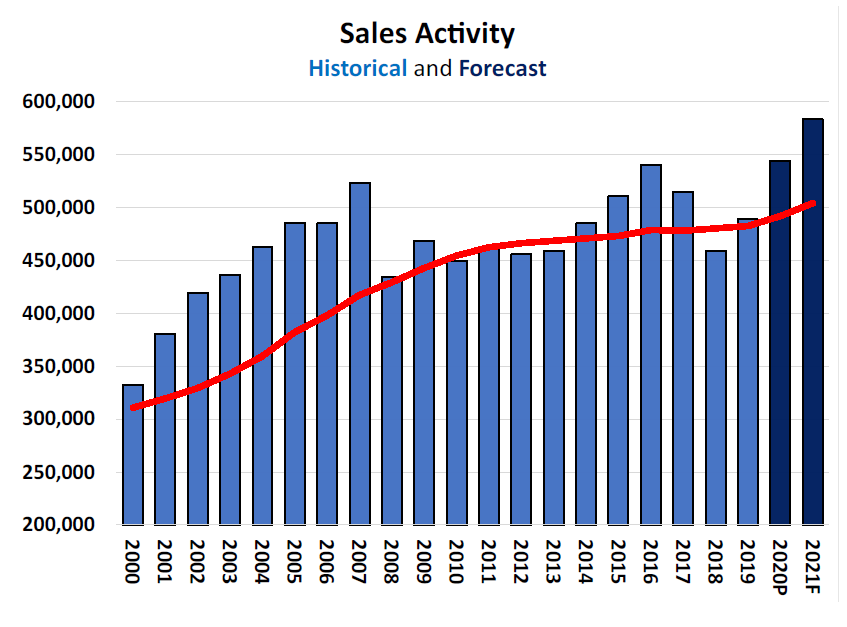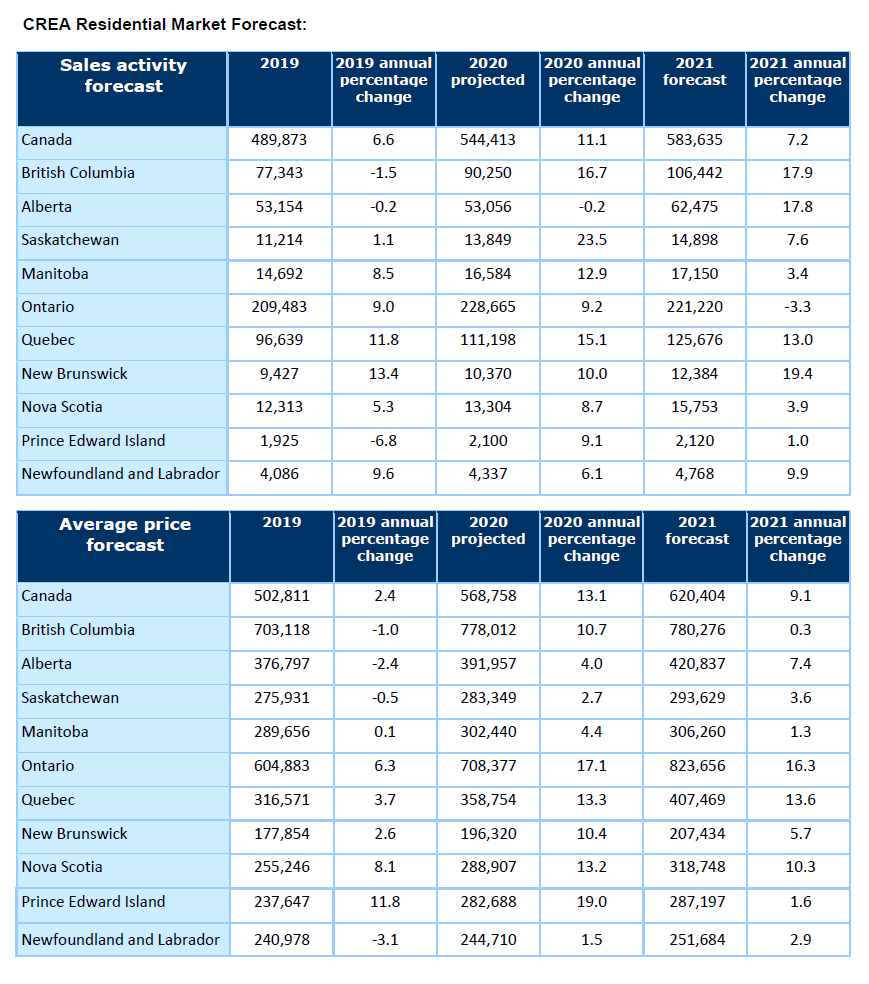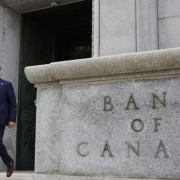December 15, 2020 – The national average price is forecast to rise by 9.1% in 2021 to $620,400. Average price trends across Canada in 2021 are generally expected to resemble those in 2020. Shortages of supply, particularly in Ontario and Quebec, are expected to result in strong price growth, while Alberta and Saskatchewan are anticipated to see average prices pick up following several years of depreciation.
Ottawa, ON December 15, 2020 – The Canadian Real Estate Association (CREA) has updated its forecast for home sales activity via the Multiple Listing Service® (MLS®) Systems of Canadian real estate boards and associations.
Current trends and the outlook for housing market fundamentals suggest activity will remain relatively healthy through 2021, with prices either continuing to climb or remaining steady in all regions.
Economic activity continues to improve slowly following the initial stages of the pandemic. Over the past several years, record levels of international immigration, low interest rates and an increasing share of millennials entering their home buying years have helped make the housing market a significant source of strength for the Canadian economy. The recent government support programs for individuals and businesses have also helped the overall economy through the most severe parts of the pandemic to date.
Mortgage interest rates have declined to record lows in 2020, including the Bank of Canada’s benchmark five-year rate used by Canada’s largest banks to qualify applicants under the B-20 mortgage stress test. With the Bank of Canada committing to keep interest rates low into 2023, mortgage interest rates are expected to remain near current levels through 2021.
Recent national sales trends have improved more than anticipated over the second half of 2020. New listings in most of the country have also recovered. However, while sales activity rebounded to record-high levels, new listings only recovered to about their five-year average in most markets. The relative strength of demand for homes compared with supply has meant sales activity has been eroding active inventory, which was already scarce in many markets pre-pandemic. That said, this has been a trend since 2015.
The increase in demand has impacted every part of the country, including the Prairies and Newfoundland and Labrador. While these regions aren’t experiencing the same intensity of upward price pressures as the rest of the country, compared with previous years, demand is strengthening and prices have indeed started to increase.
Despite the historic setback to the spring market caused by the pandemic, CREA projects national sales to hit a record of 544,413 units in 2020, representing an 11.1% increase from 2019 levels. The strength of the Canadian housing market was broad-based, with every province except Alberta registering a year-over-year increase in sales. British Columbia and Quebec stand out as large contributors to the overall gain.
The national average price in 2020 is on track to rise by 13.1% on an annual basis to just over $568,000. This reflects the current balance of supply and demand, which heavily favours sellers in many local markets.
On a monthly basis, sales are forecast to ease back to more typical levels throughout 2021; however, presuming there’s a more normal spring market in 2021, the year as a whole is expected to see more home sales than 2020. National home sales are forecast to rise by 7.2% to around 584,000 units next year. All provinces except Ontario are forecast to see increased sales activity in 2021, as low interest rates and improving economic fundamentals allow people to get into the markets where homes are available for sale.
Ontario has seen strong demand for several years, particularly outside of Toronto, which has eroded active supply in the province. This shortage is expected to limit sales activity in 2021. The strength of demand, particularly for larger single-family properties, will drive the average price higher as potential buyers compete for the most desirable properties.








 Maziar Moini, Broker of Record - Home Leader Realty Inc.
300 Richmond St. W., #300, Toronto, ON M5V-1X2
Maziar Moini, Broker of Record - Home Leader Realty Inc.
300 Richmond St. W., #300, Toronto, ON M5V-1X2



